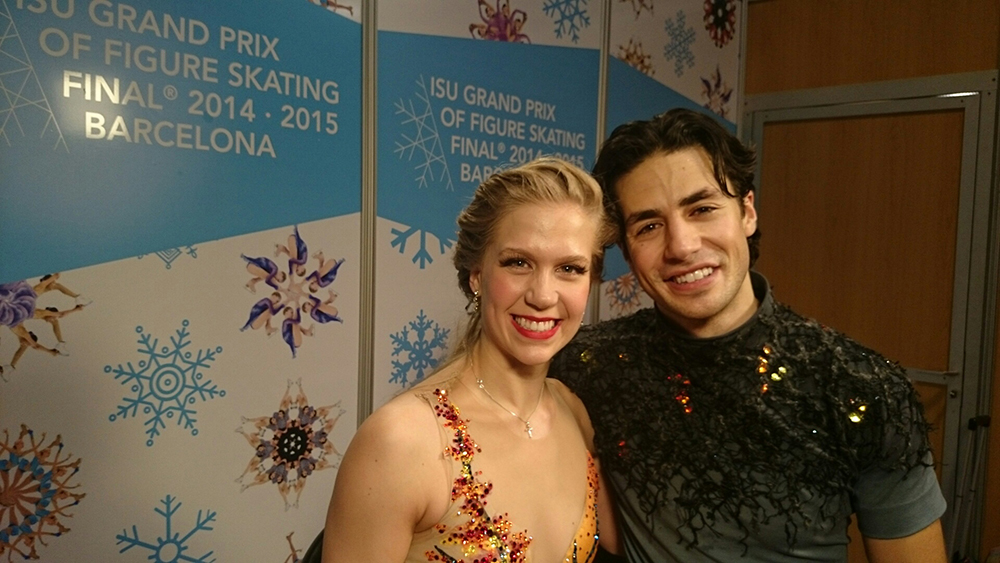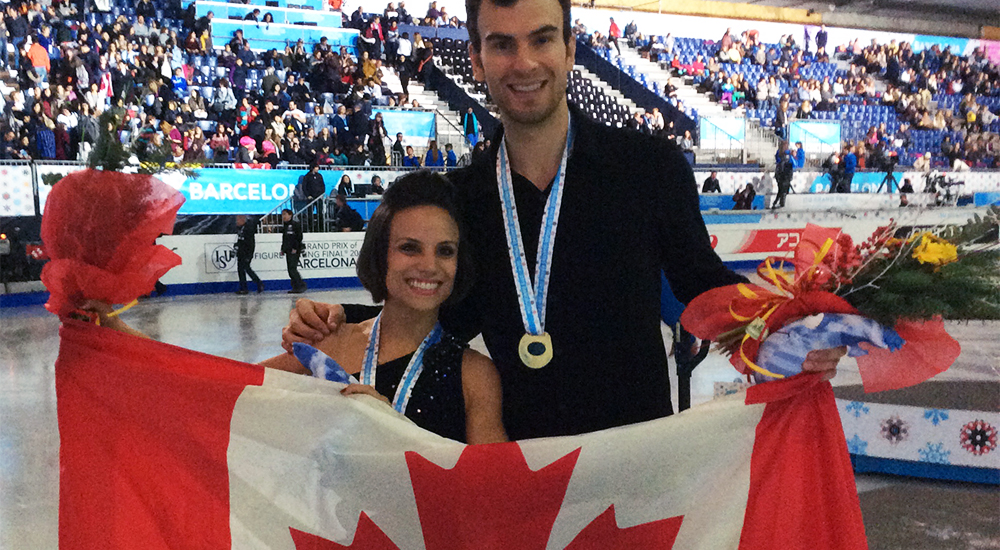Duhamel/Radford, Weaver/Poje end Canadian droughts with gold at ISU Grand Prix Final
BARCELONA – Canada enjoyed its biggest success at an ISU Grand Prix Final figure skating competition in 13 years on Saturday.
Meaghan Duhamel of Lively, Ont., and Eric Radford of Balmertown, Ont., broke their Canadian record to win the gold medal in pairs and Kaitlyn Weaver and Andrew Poje of Waterloo, Ont., also set a personal best for the victory in ice dancing.
It was Canada’s first gold in the Grand Prix Final since Patrick Chan won the men’s competition in 2011 and the first victory in pairs and ice dance since 2001. At that Grand Prix Final in Kitchener, Ont., Jamie Sale and David Pelletier took the pairs crown and Shae-Lynn Bourne and Victor Kraatz won the ice dance.
Duhamel and Radford produced 220.72 points which bettered their previous best of 213.62 set at the Canadian championships in January 2014. It also ranks fourth all-time on the ISU scoring list. Olympic silver medallists Ksenia Stolbova and Fedor Klimov of Russia, the top-seeded pair going into the competition, took the silver at 213.72 and Wenjing Sui and Cong Han of China were third at 194.31.
The highlight of Duhamel and Radford’s free skate on Saturday –performed to music by Muse- was landing the throw quadruple Salchow. That came just after Duhamel touchdown on both hands the side-by-side triple Lutz.
‘’We were so confident in our quad Salchow that it didn’t matter that I touched on the Lutz,’’ said Duhamel. ‘’It’s (the quad) has been so consistent for us in practice that we were going for it no matter what.’’
Radford was certainly pleased the green light was on.
‘’We’ve been waiting to have a skate like this all season,’’ said Radford, who mentioned he was in the audience when Sale and Pelletier won their gold in 2001. ‘’This was the first time that we actually hit the quad like we do in practice. It is so exciting.’’
After placing first in the short program Thursday, Duhamel and Radford were the last skaters to compete in the six-team event.
‘’We knew the Russian would skate a clean program, they have been so consistent all year,’’ said Duhamel. ‘’But it always seem to be our fate to go on after a great performances. We’ve surpassed all our goals for the first half of the season and we want to step it up more for the second half.’’
In ice dancing, Weaver and Poje bettered their score from last season’s silver medal performance at the world championships with 181.14 points. Madison Chock and Evan Bates of the U.S. were second at 167.09 and Gabriella Papadakis and Guillaume Cizeron of France third at 162.39.
‘’It’s definitely our strongest performance yet and it’s great to see the program is still growing,’’ said Poje. ‘’We really brought across the emotion and we were so connected on the ice that the story really came through.’’
The Canadians skated to excerpts from Vivaldi’s Four Seasons.
‘’It’s hard to pick out a moment that really stands out for us from what we did on the ice because we were so focused,’’ said Weaver. ‘’My best memory was probably our lift because it got such a reaction from the crowd.’’
The audience did not agree with the judges’ scores for Piper Gilles and Paul Poirier of Toronto who took fifth spot.
‘’We had a small bobble on one of the lifts and it probably wasn’t our best skate overall,’’ said Poirier. ‘’At the same time we didn’t have any big errors and we achieved our goal of producing two strong programs this week.’’
Canada also had a successful showing in the junior competition this week capped by a gold medal for Charlie Bilodeau of Trois-Pistoles, Que., and Julianne Séguin of Longueuil, Que., in pairs on Friday.
NOTE: Skate Canada Communications Director, Barb MacDonald, will be the media contact at the event. To arrange onsite interviews please contact her by email at [email protected].
Full results: http://www.isuresults.com/results/gpf1415/


